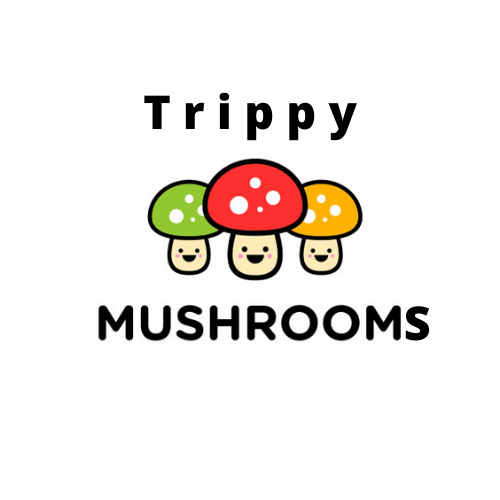No products in the cart.
Blogs
The Magic Mushrooms Benefits According to Paul Stamet
By: Admin T
We recognize that conversations regarding magic mushrooms begin and end with Paul Stamets – the mycologist, not the Star Trek Discovery scientist (though the fictional character was named after him). Heck, chances are he’s how you heard about us! That’s why we’re paying homage to the man who kicked down the mushroom kingdom’s doors harder than Mario ever could – by sharing research that sends minds on a spiritual journey.
Like us, Stamets is an advocate for medicinal fungi and mycoremediation – a form of bioremediation that uses fungi-based technology to decontaminate the environment. And if Billy Mays was still around, we’re sure he’d find a way to concoct it into a cleaning product.
Stamets is self-taught in the field and has no academic accreditations other than a bachelor’s degree in liberal arts and science from college in Olympia, Washington, The Evergreen State College. It makes his pursuit of knowledge in the field of mycology even more impressive because it’s fueled entirely by passion.
From one mushroom-head to another (the man literally owns a mushroom hat) – let’s unearth Paul Stamets’ mushroom-mind.
Shrooms Aplenty
You can likely list the mushrooms found in grocery stores: button, cremini, portobello, oyster, etc. And for some people, they may believe these mushrooms are the only ones in existence because that’s all they are ever exposed to. Stamets let it be known during an interview on Joe Rogan’s podcast, The Joe Rogan Experience, that the surface has barely been scratched.
“We’re up to about five million, just being estimated. Fungi outnumber plants 10:1.” Granted, we’re not criticizing people’s ignorance – why would a grocery store be selling magic mushrooms? Nonetheless, the results were staggering. In 2013, there were approximately only 1.3 million recognized mushroom types compared now to over 5 million. If you’re finding this statistic absurd, considering plants seem to be far more common – to the naked eye at least – than mushrooms, then get ready to suffer from RSF (resting shocked face). “30% of soil is fungal mass living in dead or healthy soil. The biggest repository of carbon in the world is in the ground related to these fungal networks. For every metre in a tree root, there’s a kilometre of mycelium. It is three feet versus 2200 feet. The extensiveness of the mycelial network in our landscapes is vast.”
Earth’s Natural Internet Stamets
TED Talk on the power of mushrooms is one for the ages. He teaches that mycelium, the vegetative section of a fungi bacteria colony that branches in a thread-like fashion, is analogous to our favourite time-consuming technological marvel calling this fungal mass “earth’s natural internet.”
Mycelium continuously grows, at times naturally by humankind, through membranes that respond to every footprint taken on Earth. For instance, when walking, you break down minerals, like sticks and grind clumps of dirt, thereby creating new minerals for the mycelium to subsist in. Technically speaking, you are a fungi farmer, and you didn’t even know it. Whaddya think of them apples – er, mushrooms?
He continues his internet analogy by stating these branching paths hold soils together – over 30,000 times the mass of the mycelium itself with this multi-directional, web-like system and transfer nutrients between plants, trees, and nearly all other sprouting life.
In turn, magic mushrooms are not only magical for their natural benefits to our body’s eco-system, but also because they adopt the role of “Mother Earth” for our planet’s eco-system.
We Are Magic Mushrooms
Paul Stamets doesn’t just live in the Mushroom Kingdom; he’s their mayor. He makes a compelling case that we human beings (eyes, ears, a nose, and other extremities) are related to mushrooms, as mentioned in his TedTalk: “We are closely related to fungi than we are to any other kingdom. A group of 20 eukaryotic microbiologists published a paper two years ago (approximately 2006) erecting opisthokonta – a superkingdom that joins animalia and fungi together”. The difference is between our corpses in the ground compared to mushrooms – unlike us, when fungi die, they don’t rot, they sporulate. Instead, they are essential to the health of the forest with debris fields that feed the mycelium.
Rest assured, if you like eating mushrooms on your pizza, it doesn’t make you a cannibal. Fungi produce strong antibiotics, so consume away without guilt that you’re not eating a distant cousin.
His Trippy Mushrooms
When a less-informed Stamets bought a bag of magic mushrooms, unbeknownst to the affects they’d have on him, it was a life-changing experience.
Stamets trekked through the Ohio woods and scaled the tallest oak tree he could find to maximize the imminent trippy journey; he wanted to get high and be high.
Suddenly, a storm brewed, and thunder shook the ground everywhere around him. He saw fractals and waves of multi-dimensional patterns everywhere. Stamets was washed with rain and felt in touch with Gaia; his heart opened up, and he became one with all. And then it dawned on him – lightening + tall tree = fuck!
What did he learn from this experience?
“This stuttering habit is ridiculous. And I’m not stupid, and I said to myself: ’Stop stuttering now.’
I said that dozens, hundreds of times over and over. Fortunately, the storm passed, and I held onto the tree, soaking wet. I came down and went back to where I was living.
The next day, there’s a lady that I really liked a lot. But she was always attracted to super self-assured jocks.
I didn’t want to stare at her eyes because I would stutter. The more humiliating us stutterers feel, the more we stutter. For the first time, we walked towards me and said, ’Good morning, Paul. How are you?’ She was always so nice to me, and I was terrified because I would embarrass myself. I looked at her straight in the eyes, and I said, ‘I’m doing fine.
How are you?’ And I stopped stuttering in one day.” Stamets attributes his transformation from stuttering fungi into a confident fun guy was because of neurogenesis.
The magic mushrooms reset the neurology of his brain and let him chart new neurological pathways to realize a way of thinking he couldn’t find without them.
Want to learn more about the medicinal benefits of magic mushrooms? Contact a Trippy Mushroom expert, and we’ll ensure you know all the facts. Click here.


Great article, thank you for that! Little correction: Stamets*